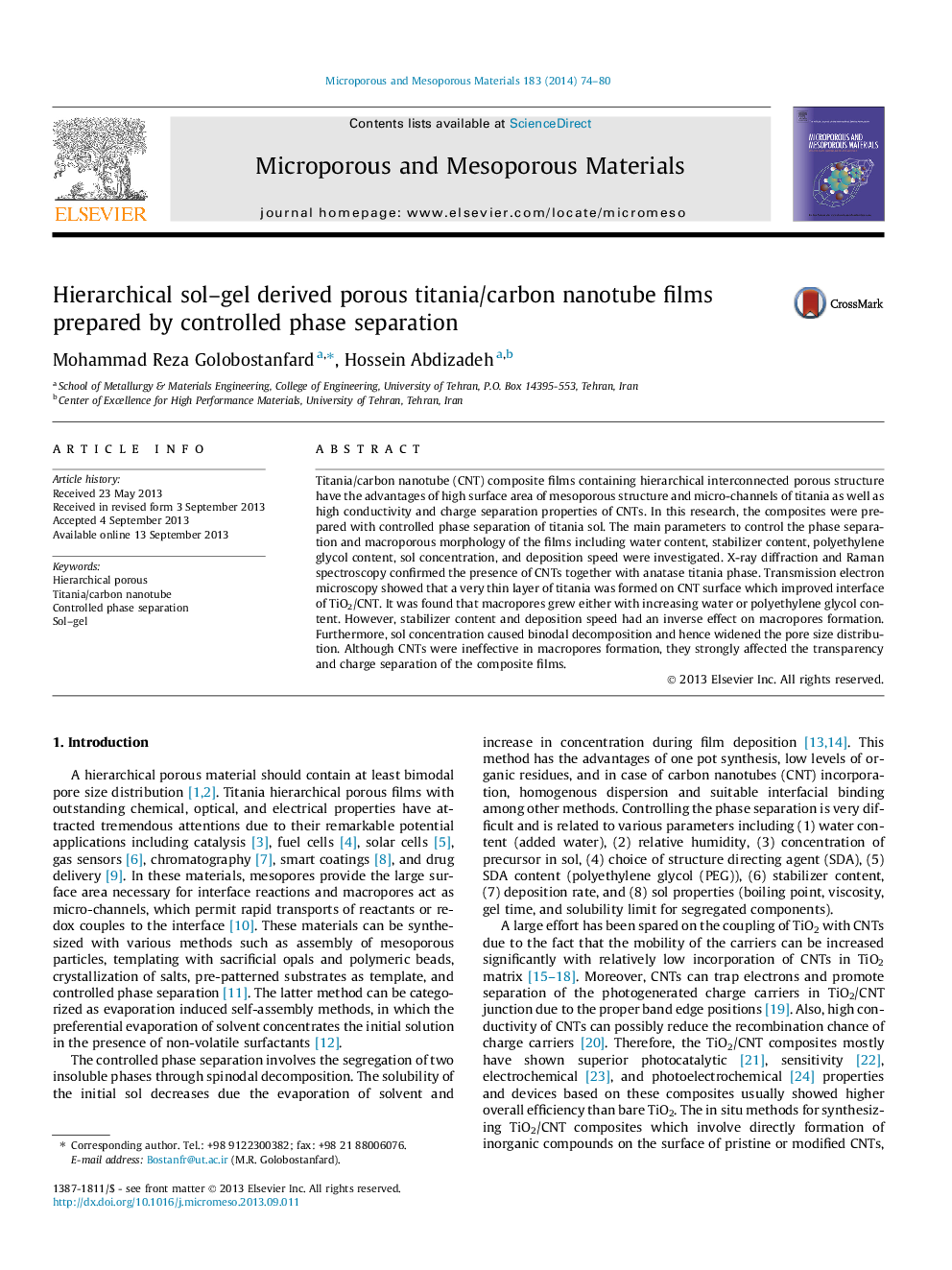| Article ID | Journal | Published Year | Pages | File Type |
|---|---|---|---|---|
| 73212 | Microporous and Mesoporous Materials | 2014 | 7 Pages |
•Hierarchical porous TiO2/CNT films were synthesized by controlled phase separation.•Macropores grow with water or polyethylene glycol content.•Stabilizer content and deposition speed decrease the macropores size.•CNTs are inactive in pore formation, but strongly affected optoelectrical property.
Titania/carbon nanotube (CNT) composite films containing hierarchical interconnected porous structure have the advantages of high surface area of mesoporous structure and micro-channels of titania as well as high conductivity and charge separation properties of CNTs. In this research, the composites were prepared with controlled phase separation of titania sol. The main parameters to control the phase separation and macroporous morphology of the films including water content, stabilizer content, polyethylene glycol content, sol concentration, and deposition speed were investigated. X-ray diffraction and Raman spectroscopy confirmed the presence of CNTs together with anatase titania phase. Transmission electron microscopy showed that a very thin layer of titania was formed on CNT surface which improved interface of TiO2/CNT. It was found that macropores grew either with increasing water or polyethylene glycol content. However, stabilizer content and deposition speed had an inverse effect on macropores formation. Furthermore, sol concentration caused binodal decomposition and hence widened the pore size distribution. Although CNTs were ineffective in macropores formation, they strongly affected the transparency and charge separation of the composite films.
Graphical abstractFigure optionsDownload full-size imageDownload as PowerPoint slide
